Land snails are surprisingly remarkable creatures, for example did you know that they have over 14,000 teeth, can lay up to 120 eggs and have the ability to hibernate to survive during dry spells and colder months?
Snails hibernate by sealing the entrance of their shell with a dry layer of mucus (called an epiphragm) to seal the moisture in. They normally only hibernate for a few weeks or months but can also amazingly survive hibernating for several years. An Egyptian dessert snail was once mistaken for dead and placed in an exhibit in the British museum for 4 years, until they discovered the snail was actually just hibernating. They placed the snail in a basin of water to wake it up and then fed it lettuce leaves, this remarkable little snail then lived for a further 2 years.

Snails are invertebrates which means they are an animal without a backbone. Instead of a backbone snails are born with a shell to protect them. The shell they have when they are first born is soft and transparent, it only becomes hard as the snail begins to eat. Snails absorb calcium from their food so they can produce calcium carbonate from glands in their mantle. A snails shell grows as they add new calcium carbonate to the edge of the shells opening, which means the innermost part of snails shell was formed when they were a baby and the outermost edge is the newest part of the shell.

Snails feed using a ribbon-like tongue called a radula which is lined with thousands of tiny teeth, they use the radula to rasp across the surface of food and scrape and tear particles off. Snails cycle through teeth like sharks by growing new teeth at the back of the radula as the old worn out teeth at the front are pushed out. If you listen very carefully you can actually hear the sound of a snail eating by scraping away at its food.
Land snails have a strong muscular foot which they use to crawl and climb around, the propel themselves forward using a combination of strong muscular contractions and mucus. The mucus acts a lubricant reducing friction and also protecting them from rough and sharp terrain. Snails are often more active on wet days and will often follow another snails mucus trail as they find it quicker and easier to move on moist surfaces.
You can find lots of fun, easy, educational activity ideas below to explore more about these amazing creatures.
1. Go on a snail safari

Snails are one of the easiest minibeasts to find and observe. You can normally find them hiding in shady spots, under leaves, on plant pots or along borders. When you find a snail you can identify it by its shell markings.
There are three general types of snail to look for in the UK:
1. Common garden snails which have a mottled brown shell.
2. Banded snails which have a distinctive pattern of bands on its shell.
3. Glass snails, so calls because it’s shell is slightly translucent and more shiny than the others.
It’s best to observe the snails without disturbing them. But if you do trust your little learners to handle them very carefully you could gently place a snail on a leaf for the children to lightly hold and observe up close.
Pretty please remind children to be very gentle with the snails and try not leave them out in direct sun or handle them too much. (Stressed snails will expel bubbles or a foul smelling liquid to deter predators).

2. Snail observation box
Land snails have a strong muscular foot which they use to crawl and climb around, the propel themselves forward using a combination of strong muscular contractions and mucus. The mucus acts a lubricant reducing friction and also protecting them from rough and sharp terrain.

You can observe the contraction of the snails foot and the way it glides on mucus as it moves by making a simple snail observation box or window. All you need for this is a small recycled cardboard box and a firm sheet of recycled plastic. You can often use recycled food packaging for this,

First cut two windows into the back and front of the box. Then tape or glue the sheet of plastic packaging onto the front window. You need the plastic packaging to be firm and strong enough to safely hold a snails weight. It also needs to be clean and clear.

Finally find a garden snail and carefully and gently place it onto your observation box. The children can then lie down and hold the box carefully up to look at the underside of the snail as it moves. If the snail seems securely attached to the plastic window you can also carefully tilt the box sideways to look from the side.

3. Snail nature art frames
Nature art frames are really simple to make, fun to play with and create some wonderful images. You just need an old piece of cardboard a pen and some scissors. We hate to waste anything and recycling and reusing materials is one of many small things we can all do to help the environment. So instead of chucking used cardboard boxes we like to find ways to use them in crafts and activities.
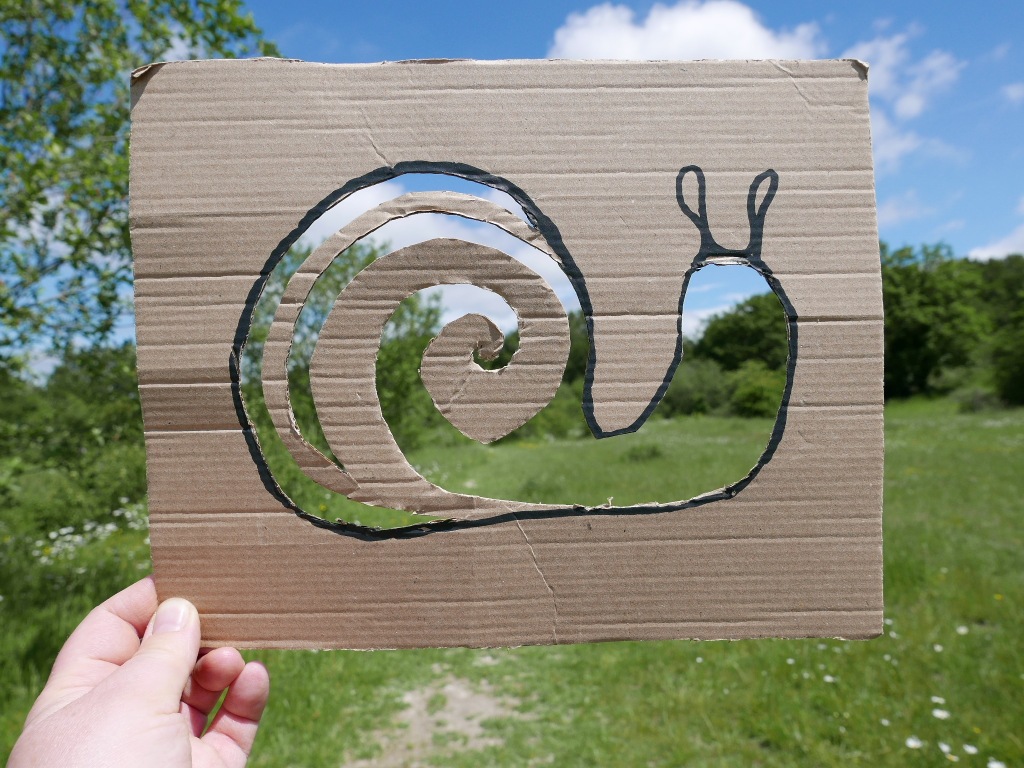
All you need to make a nature frame is to draw a simple shape or picture like a snail onto cardboard. Your shape or picture should have at least 1- 2 easy to cut out sections that you can then look through. When you have cut out the see through sections of your frames, you can take them outside to hold them up against any of the interesting natural objects, textures, patterns and shapes you can see, like the sky, trees, flowers and grass for example.
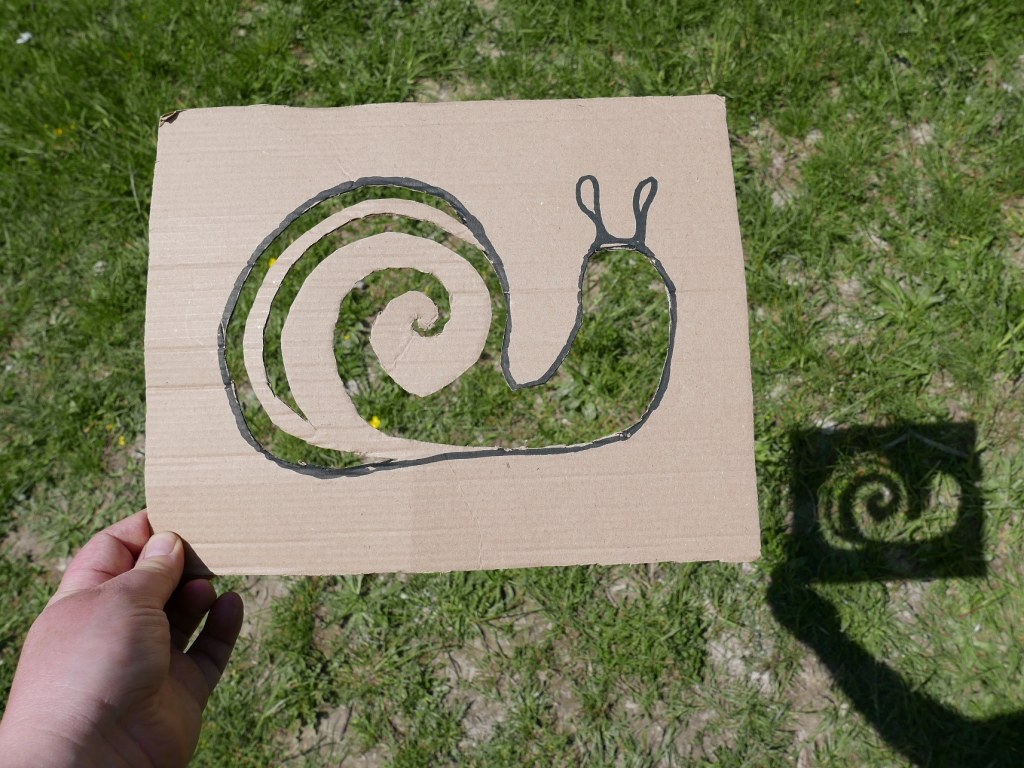
The picture you see or create with the frames changes as you move the paper around. It s fun to see all the beautiful patterns, shapes and colours of nature bring your pictures to life. You could even take photos of the nature frames as you go to capture the artwork and pictures they create.
4. Snail observation hotel
Another way to observe snails is to invite them to live with you for a short period of time, a snail holiday of sorts. (Please only do this if you are prepared to take care and look after them properly, they need fresh food daily and to be cleaned out every 2-3 days).

For this you will need:
- A clear container with a secure lid and air holes in the top (you can buy ready made snail-ariums or insect containers). Snails dehydrate easily so it is important to keep the container cool and out of sunlight.
- To line the base with dampened moss or soil to help keep the moisture levels up.
- Your snail will appreciate having somewhere dark to hide, a small flower pot and some leaves are perfect for this.
- Cuttlefish bone or old abandoned snail shells to munch on as snails require a lot of calcium to maintain and repair thier shells.
- Fresh food daily and water.
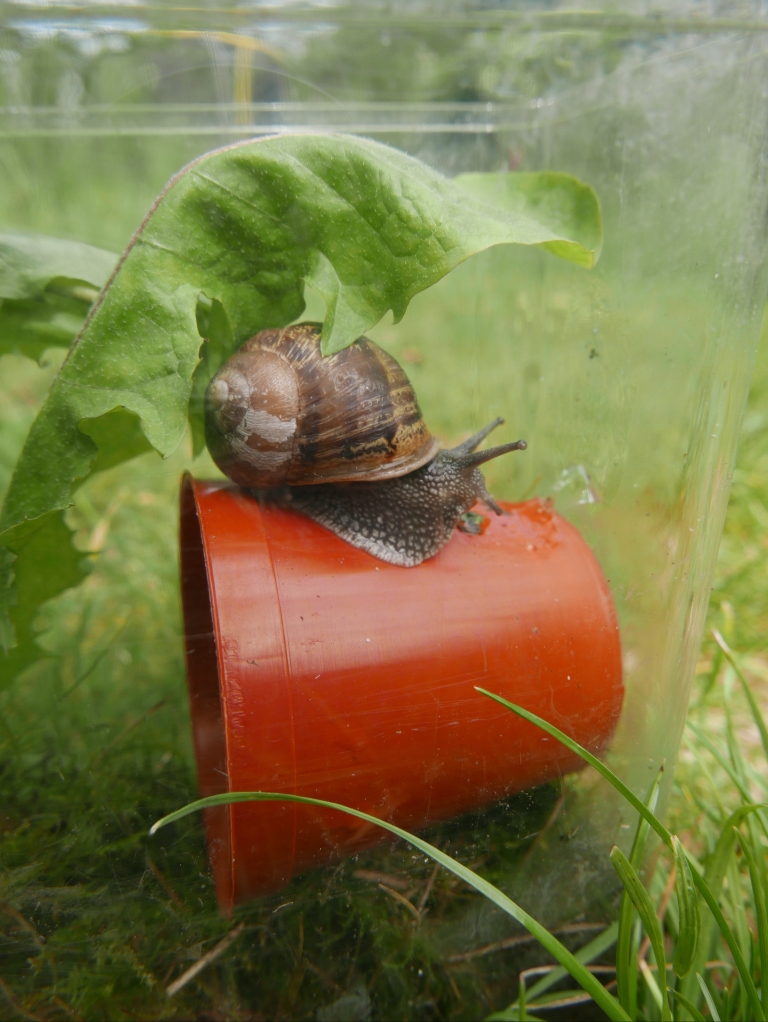
Here are some of the foods (uncooked) you can feed your snails: Apple, grapes, melon, strawberry, tomato, courgette, cucumber, lettuce, peas, potato, sweet potato, turnip, watercress, dandelion leaves, We found outs particularly liked cucumber.
5. Painted snail stones
We love finding painted pebbles when we are out and about, it’s wonderful to see the creativity and love that people put into them. You can easily find stones or pebbles to decorate yourself by looking in your garden, on a nature walk or along the shore. All you need then is some paint or permanent markers to paint or draw colourful designs onto the pebbles. You could even turn your stones or pebbles into snails.
*Safety note please be aware of the choking hazard of pebbles with smaller children.

Once you have finished painting your pebbles you could use them in pretend play, as games counters or hide them in your garden and have a treasure hunt. You could even join a local rock finding group where you show pictures of the rocks you have made and invite people to find them in a local park or a safe, easy to access place. Who knows how far your rocks may travel and the adventures they might have may have along the way.
6. Conker snails
Conker snails are a cute and fun activity using just horse chestnut seeds (aka conkers) and playdough or clay.
Simply paint or draw a spiral onto the conkers to turn them into snail shells and then add playdough or clay to form the bodies. These are great for role play and as story props for books like ‘The Snail and the Whale’. You could also do this with round stones instead of conkers.

7. Snail tracking
It’s possible to track an individual snails movement by carefully marking their shell with dots of nail varnish or acrylic paint. It is best to use muted natural colours like brown and green as any bright colours may make your snail friend more visible to predators.

Then you can observe how far they travel round your garden over time, what plants they eat and where they like to hide. Do you notice a pattern or particular groups of snails that cluster together? Older children can make notes or keep a diary of their observations.

8. Snail trails
You can make some simple snail trail art by gently placing a snail on some black paper or card. As the snail moves across the card it will leave a silvery trail that you can dust with powder or spray with hairspray to fix onto the surface.
Pretty please remind children to be very gentle with the snails and try not leave them out in direct sun or handle them too much. (Stressed snails will expel bubbles or a foul smelling liquid to deter predators). Also please put them back safety where you originally found.

9. Snail racing
If you are gentle with your snails, you could have some fun with a little bit of snail racing. All you need is a flat snail friendly surface and some chalk. Draw a large circle for your racing zone and then draw an outer band as the finishing point. Then place your snails back to back in the centre facing out towards the finish line.

The first snail to cross over fully into the outer band/finish point is the winner. Pretty please remind children to be very gentle with the snails and try not leave them out in direct sun or handle them too much. (Stressed snails will expel bubbles or a foul smelling liquid to deter predators). Also please put them back safety where you originally found.
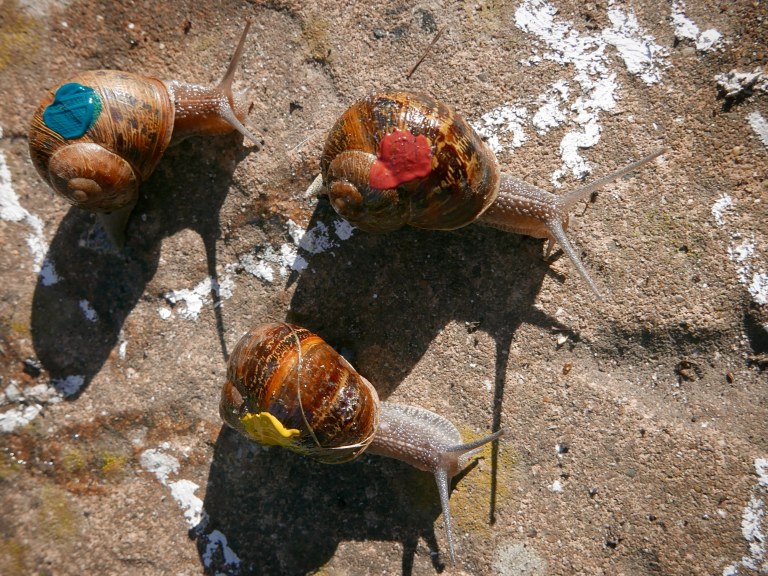
10. Log slice snails
To make a log slice snail you will need 3 or 4 log slices of different sizes, a small log (half or whole) or alternatively a small piece or plank of wood, two sticks and either glue or nails.
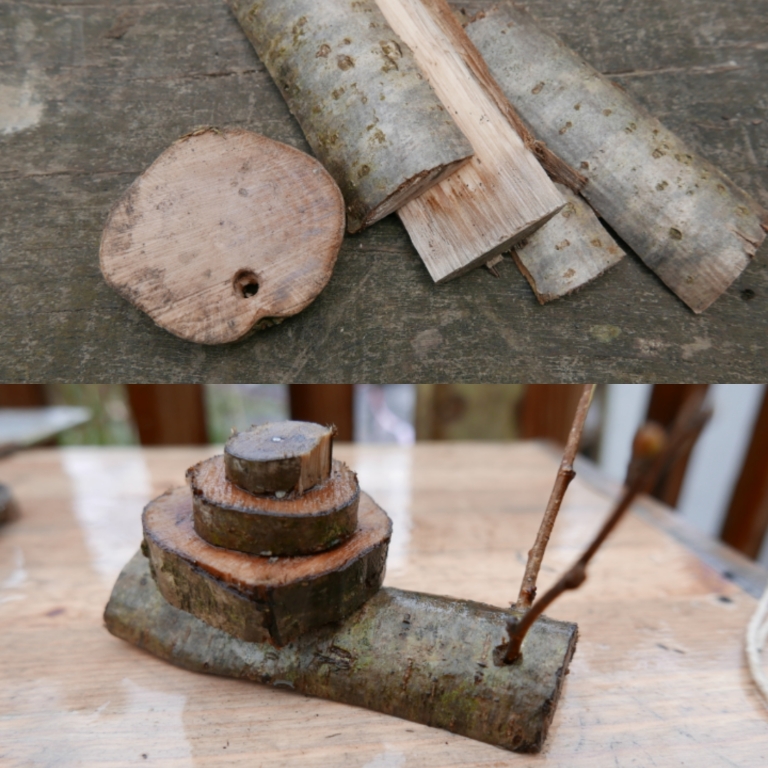
Simply glue or nail the wood slices on top of one end of the log or piece of wood to form the shell. Then drill two holes into the head end of your snail and glue the sticks into them to form the snails antenna. If you like you could paint or decorate your snail afterwards.
(For Day 10 of 30 Days Wild we looked for garden snails and enjoyed some simple snail science activities and crafts)
If you like this you might like to try:
10 Beetle activities and fun facts

Butterfly life cycle, fun facts and activities

Make a home for wildlife in your garden

Fossil facts and fun activities


27 thoughts on “10 Land snail science and craft activities”